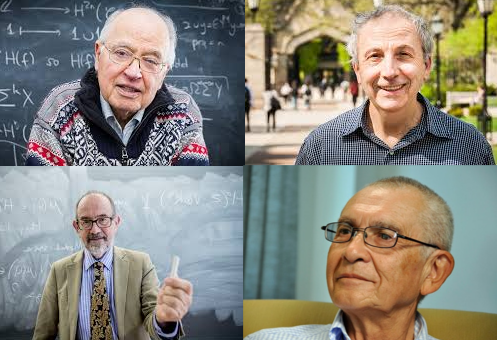Gauge theory and moduli spaces
Master's dissertation project
 In 1954, C. N. Yang (Nobel Prize in Physics) and R. Mills developed the geometric gauge theory formalism which is crucial to understand three out of four known fundamental interactions in physics: electromagnetism, Weak force and Strong force. In classical terms, Yang-Mills theory proposes that the fields that mediate these interactions are described as the curvature of a connection on a principal G-bundle over our space-time. The Lie group G is U(1) in the case of electromagnetism, SU(2) in the case of Weak force, and SU(3) for the Strong force. The physical configuration of these fields are ruled by the Yang-Mills equation. In the absence of any source, the field configurations that satisfy the Yang-Mills equation have a topological invariant. If this invariant is trivial then the field is zero. But this is not the only solution to the Yang-Mills equation, there exist also topologically non-trivial field configurations that we call instantons. The name comes from the fact that these field configurations are localized at a specific point of space-time (an instant).
In 1954, C. N. Yang (Nobel Prize in Physics) and R. Mills developed the geometric gauge theory formalism which is crucial to understand three out of four known fundamental interactions in physics: electromagnetism, Weak force and Strong force. In classical terms, Yang-Mills theory proposes that the fields that mediate these interactions are described as the curvature of a connection on a principal G-bundle over our space-time. The Lie group G is U(1) in the case of electromagnetism, SU(2) in the case of Weak force, and SU(3) for the Strong force. The physical configuration of these fields are ruled by the Yang-Mills equation. In the absence of any source, the field configurations that satisfy the Yang-Mills equation have a topological invariant. If this invariant is trivial then the field is zero. But this is not the only solution to the Yang-Mills equation, there exist also topologically non-trivial field configurations that we call instantons. The name comes from the fact that these field configurations are localized at a specific point of space-time (an instant).
By the way, Yang-Mills gauge theory is the topic of one of the seven Millenium Prize problems, you can win a million dollars by solving it!
In 1978, a dream team of mathematicians: M. Atiyah (Fields Medal and Abel Prize), V. Drinfeld (Fields Medal), N. Hitchin and Y. Manin, published a beautiful paper giving a full classification of instanton bundles over the 4-sphere S4. Most surprinsingly, this was achieved using only linear algebra and in just 2 pages! This is now known as the ADHM construction of instantons after its authors.
One can consider a manifold parametrizing all (topologically non-trivial) configurations of fields satisfying the Yang-Mills equation: the moduli space of instantons. This is a manifold with an extremely rich geometry, in particular it is equipped with a hyperKähler structure and one can define certain objects on it, called branes, that are special with respect to the hyperKähler structure. Me and two collaborators found examples of the submanifolds supporting these branes by studying involutions on the moduli space of instantons.
The project
The main objective of this project is to study the moduli space of instantons over S4 by means of the ADHM construction. If time allows, we will complete the construction of (hyperKähler) branes on it, an original result that could be publish in an international research journal.The milestones of the project are:
- Basics in gauge theory: bundles, connection and curvature.
- Action of gauge groups and momentum maps.
- Symplectic reduction.
- HyperKähler geometry and reduction.
- The ADHM equations.
- Instantons and their moduli space.
- Involutions on the moduli space of instantons.
- Lagrangian submanifolds as fixed point of involutions.
- Construction of flat bundles over these Lagrangian submanifolds.
Prerequisites
It is advisable, although not essential, to have followed:- Geometric Mechanics.
- Geometric and Algebraic Methods in Engineering and Physics.
- Algebraic Topology.
Recomended bibliography
- Geometry of Yang-Mills Fields,, M.F. Atiyah, Accademia Nazionale Dei Lincei Scuola Normale Superiore (1979).
- Construction of instantons, M. Atiyah, V. Drinfeld, N. Hitchin, Y. Manin, Phys. Lett. 65A (1978).
- The geometry of four-manifolds, S. Donaldson, P. Kronheimer, Oxford University Press (1990).
- Differential Geometry of Complex Vector Bundles, S. Kobayashi, Princeton University Press (1987).
- Topology, Geometry and Gauge Fields: Interactions, G. Naber, Springer-Verlag.
- Geometry, Topology and Physics, M. Nakahara, Springer-Verlag (2006).
Back to Emilio Franco's webpage